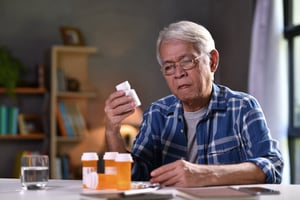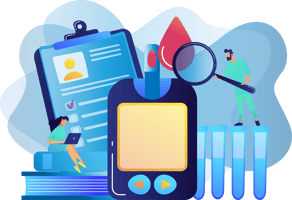
6 Steps to Help You Get Started With Telehealth and RPM
Launching a new telehealth program can be an intimidating task, especially for those who have never leveraged the service before. Even for those who are...
Every quarter, we analyze recent research exploring the application of telehealth and RPM. These 3 studies point to the positive impact of telehealth and RPM for heart failure, diabetes, and COVID-19 patients.
The goal of this study was to determine accuracy of noninvasive remote monitoring in predicting heart failure re-hospitalization. Researchers found that implantable cardiac devices can help with accurate and timely detection of worsening heart failure.

78 patients
Age 68+

At time of hospital discharge patients enrolled and fitted with a disposable multi-sensor patch

Patient data uploaded via smartphone to cloud analytics platform

24 hour clinician monitoring for up to 3 months, alerts sent to clinician when reading different than baseline
Throughout the study, 49 unplanned non-trauma events occurred, including 27 HF events; 28 of the total ED visits resulted in hospitalizations.
The platform detected precursors of hospitalization for HF exacerbation with up to 88% sensitivity and 85% specificity. The median time between initial alert and readmission was about 6.5 days.
The goal of this study was to weigh the benefits and risks of at-home diabetes monitoring and treatment compared to traditional, in-person monitoring and treatment. The study found that telehealth tools can can help people with diabetes improve TIR without increasing the risk of hypoglycemia. At the same time, through the supervision and encouragement of doctors, patients can avoid weight gain and improve self-management of their condition.

180 patients
90 control group, 90 intervention group
Intervention group: at home blood glucose monitoring and smartphone app
Control group: only access to the smartphone application

Both groups participated in questionnaire survey through smartphone application over a 3 month period
BMI and postprandial blood glucose (PBG) of the control group at was higher than the intervention group.
In the intervention group, time in range (TIR) increased. It decreased in the control group.
There was no difference in the incidence of hypoglycemia between the two groups.
This paper provides insights into a Washington D.C. medical center's experience developing and deploying an RPM program for patients diagnosed with COVID-19 and discharged from an urban, academic emergency department (ED).

83 patients diagnosed with COVID-19 upon ED visit
21 day monitoring during the acute phase of illness
Each morning patient submits biometric data (pulse oximeter and thermometer) and symptom survey

Survey responses and biometric results analyzed by dashboard and flagged for clinical follow up if indication of deterioration
60 (72%) patients triggered an automated flag at least once, 39 (47%) patients were escalated to a telehealth consult
17 (20%) patients were referred to the ED for inperson evaluation and possible admission
Five (6%) of these 17 were referred to the ED by ambulance transport (911)

Launching a new telehealth program can be an intimidating task, especially for those who have never leveraged the service before. Even for those who are...

We’ve all been there—you go to the doctor when you are feeling...

According to the CDC, 10.5% of the US population (approximately 34.2 million people) lives with diabetes, making it one of the most prevalent chronic...